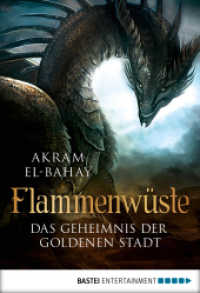- ホーム
- > 洋書
- > 英文書
- > Religion / Ethics
Full Description
Magic, both benevolent (white) and malign (black), has been practiced in the British Isles since at least the Iron Age (800 BCE-CE 43). "Curse tablets"--metal plates inscribed with curses intended to harm specific people--date from the Roman Empire. The Anglo-Saxons who settled in England in the fifth and sixth centuries used ritual curses in documents, and wrote spells and charms.
When they became Christians in the seventh century, the new "magicians" were saints, who performed miracles. When William of Normandy became king in 1066, there was a resurgence of belief in magic. The Church was able to quell the fear of magicians, but the Reformation saw its revival, with numerous witchcraft trials in the late 16th and 17th centuries.
Contents
Table of Contents
Introduction
1. Human Bones, Amulets and Animals: Magic and Ritual in Iron Age Britain
2. Witchcraft, Curse Tablets and Fear of the Restless Dead: Magic in Roman Britain
3. Germanic Paganism, Magic and Witchcraft in Anglo-Saxon England
4. Paganism, Christianity and the Cult of Saints in Early Northumbria
5. Paganism and Christianity in Early East Anglia and Mercia
6. Paganism and Christianity in the Early Kingdom of Wessex
7. The Kingdom of Wessex, the Vikings, and Pagan Amulets and Christianity in the Danelaw
8. Saints and Magic After the Norman Conquest: Anglo-Saxon Saints
9. New English Saints and Monasteries, and Late Medieval Ritual Curses
10. The Saints of Wales and Scotland: Holy Islands, Ritual Curses and Healing Waters
11. Pagan Magic in Late Medieval Christianity
12. Magic, Cunning-Folk and Witchcraft Trials in the Sixteenth and Seventeenth Centuries
Conclusion
Chapter Notes
Bibliography
Index








